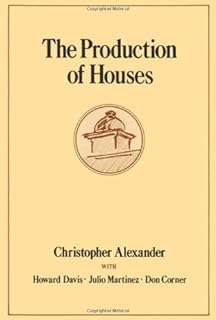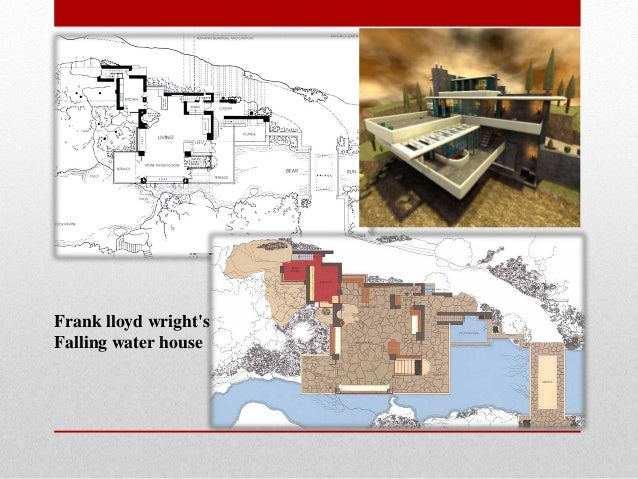A New Theory Of Urban Design Christopher Alexander Pdf Viewer

In this radical new look at the theory and practice of urban design, Christopher Alexander asks why our modern cities so often lack a sense of natural growth, and suggests a set of rules and guidelines by which we can inject that `organic' character back into our High Streets, buildings, and squares. At a time when so many of Britain's inner cities are undergoing, or are in need of, drastic renovation, Christopher Alexander's detailed account of his own experiments in urban-renewal in San Francisco makes thought-provoking reading.
Christopher Alexander in 2012 Born Christopher Wolfgang Alexander ( 1936-10-04) October 4, 1936 (age 81), Austria Nationality American Alma mater (Ph.D) Occupation Architect Awards Christopher Wolfgang Alexander (born 4 October 1936 in, Austria) is a widely influential and design theorist, and currently at the. His theories about the nature of human-centered have affected fields beyond architecture, including,, and others. Alexander has designed and personally built over 100 buildings, both as an architect and a general contractor. In software, Alexander is regarded as the father of the movement. The first —the technology behind —led directly from Alexander's work, according to its creator,. Alexander's work has also influenced the development of. Download Sandstorm Action Photoshop. In architecture, Alexander's work is used by a number of different contemporary architectural communities of practice, including the movement, to help people to reclaim control over their own built environment.

However, Alexander is controversial among some mainstream architects and critics, in part because his work is often harshly critical of much of contemporary architectural theory and practice. Alexander is known for many books on the design and building process, including, (first published as a paper and recently re-published in book form),, A New Theory of Urban Design, and. More recently he published the four-volume: An Essay on the Art of Building and the Nature of the Universe, about his newer theories of 'morphogenetic' processes, and The Battle for the Life and Beauty of the Earth, about the implementation of his theories in a large building project in Japan. All his works are developed or accumulated from his previous works, so his works should be read as a whole rather than fragmented pieces. His life's work or the best of his works is The Nature of Order on which he spent about 30 years, and the very first version of The Nature of Order was done in 1981, one year before this famous debate with Peter Eisenman in Harvard. Alexander is perhaps best known for his 1977 book, a perennial seller some four decades after publication. Reasoning that users are more sensitive to their needs than any architect could be, he produced and validated (in collaboration with his students Sara Ishikawa,, Max Jacobson, Ingrid King, and Shlomo Angel) a ' to empower anyone to design and build at any scale.
A New Theory Of Urban Design Christopher Alexander Pdf Viewer. ZOO MAGAZINEFashion. Urban Institute opens minds.
Contents • • • • • • • • • • • • • • • • • • Personal life [ ] As a young child Alexander emigrated in fall 1938 with his parents from Austria to England, when his parents were forced to flee the Nazi regime. He spent much of his childhood in and, England, where he began his education in the sciences. He moved from England to the United States in 1958 to study at and. He moved to in 1963 to accept an appointment as Professor of Architecture, a position he would hold for almost 40 years. In 2002, after his retirement, Alexander moved to, England, where he continues to write, teach and build. Alexander is married to Margaret Moore Alexander, and he has two daughters, Sophie and Lily, by his former wife Pamela. Education [ ] Alexander attended, England.
In 1954, he was awarded the top open scholarship to, in chemistry and physics, and went on to read mathematics. He earned a in Architecture and a in Mathematics. He took his doctorate at Harvard (the first in Architecture ever awarded at ), and was elected fellow at Harvard. During the same period he worked at MIT in transportation theory and computer science, and worked at Harvard in cognition and cognitive studies. Honors [ ] Alexander was elected to the, Harvard University 1961-64; awarded the First Medal for Research by the American Institute of Architects, 1972; elected member of the Swedish Royal Academy, 1980; winner of the Best Building in Japan award, 1985; winner of the ACSA (Association of Collegiate Schools of Architecture) Distinguished Professor Award, 1986 and 1987; invited to present the Louis Kahn Memorial Lecture, 1992; awarded the Seaside Prize, 1994; elected a Fellow of the, 1996; one of the two inaugural recipients of the Athena Award, given by the (CNU), 2006.
Awarded ( in absentia) the by the, 2009; awarded the lifetime achievement award by the, 2011; winner of the, 2014. Career [ ] Author [ ] (1979) described the perfection of use to which buildings could aspire: There is one timeless way of building. It is a thousand years old, and the same today as it has ever been. The great traditional buildings of the past, the villages and tents and temples in which man feels at home, have always been made by people who were very close to the center of this way. It is not possible to make great buildings, or great towns, beautiful places, places where you feel yourself, places where you feel alive, except by following this way. And, as you will see, this way will lead anyone who looks for it to buildings which are themselves as ancient in their form, as the trees and hills, and as our faces are.
(1977) described a practical architectural system in a form that a theoretical mathematician or computer scientist might call a. The work originated from an observation that many medieval cities are attractive and harmonious.
The authors said that this occurs because they were built to local regulations that required specific features, but freed the architect to adapt them to particular situations. Download Map Dota Naruto Vs Bleach Ai Terbaru. The book provides rules and pictures, and leaves decisions to be taken from the precise environment of the project. It describes exact methods for constructing practical, safe and attractive designs at every scale, from entire regions, through cities, neighborhoods, gardens, buildings, rooms, built-in furniture, and fixtures down to the level of doorknobs. A notable value is that the architectural system consists only of classic patterns tested in the real world and reviewed by multiple architects for beauty and practicality. The book includes all needed surveying and structural calculations, and a novel simplified building system that copes with regional shortages of wood and steel, uses easily stored inexpensive materials, and produces long-lasting classic buildings with small amounts of materials, design and labor.
It first has users prototype a structure on-site in temporary materials. Once accepted, these are finished by filling them with very-low-density concrete. It uses construction to build as high as three stories, permitting very high densities. This book's method was adopted by the University of Oregon, as described in (1975), and remains the official planning instrument. It has also been adopted in part by some cities as a building code. The idea of a appears to apply to any complex engineering task, and has been applied to some of them. It has been especially influential in where have been used to document collective knowledge in the field.
A New Theory of Urban Design (1987) coincided with a renewal of interest in among architects, but stood apart from most other expressions of this by assuming a distinctly anti-masterplanning stance. An account of a design studio conducted with Berkeley students, it shows how convincing urban networks can be generated by requiring individual actors to respect only local rules, in relation to neighbours. A vastly undervalued part of the Alexander canon, A New Theory is important in understanding the generative processes which give rise to the latterly championed by,, and. (2003–04), which includes The Phenomenon of Life, The Process of Creating Life, A Vision of a Living World and The Luminous Ground, is Alexander's most comprehensive and elaborate work. In it, he puts forth a new theory about the nature of space and describes how this theory influences thinking about architecture, building, planning, and the way in which we view the world in general. The mostly static patterns from A Pattern Language have been amended by more dynamic sequences, which describe how to work towards patterns (which can roughly be seen as the end result of sequences). Sequences, like, promise to be tools of wider scope than building (just as his theory of space goes beyond architecture).
The online publication Katarxis 3 (September 2004) includes several essays by Christopher Alexander, as well as the legendary debate between Alexander and from 1982. Alexander's latest book, The Battle for the Life and Beauty of the Earth: A Struggle Between Two World-Systems (2012), is the story of the largest project he and his colleagues had ever tackled, the construction of a new High School/College campus in Japan. He also uses the project to connect with themes in his four-volume series. He contrasts his approach, (System A) with the construction processes endemic in the US and Japanese economies (System B). As Alexander describes it, System A is focused on enhancing the life/spirit of spaces within given constraints (land, budget, client needs, etc.) (drawings are sketches - decisions on placing buildings, materials used, finish and such are made in the field as construction proceeds, with adjustments as needed to meet overall budget); System B ignores, and tends to diminish or destroy that quality (architect responsible for drawings which the builder uses to build structures at the lowest possible cost). In the last few chapters he describes 'centers' as a way of thinking about the connections among spaces, and about what brings more wholeness and life to a space.